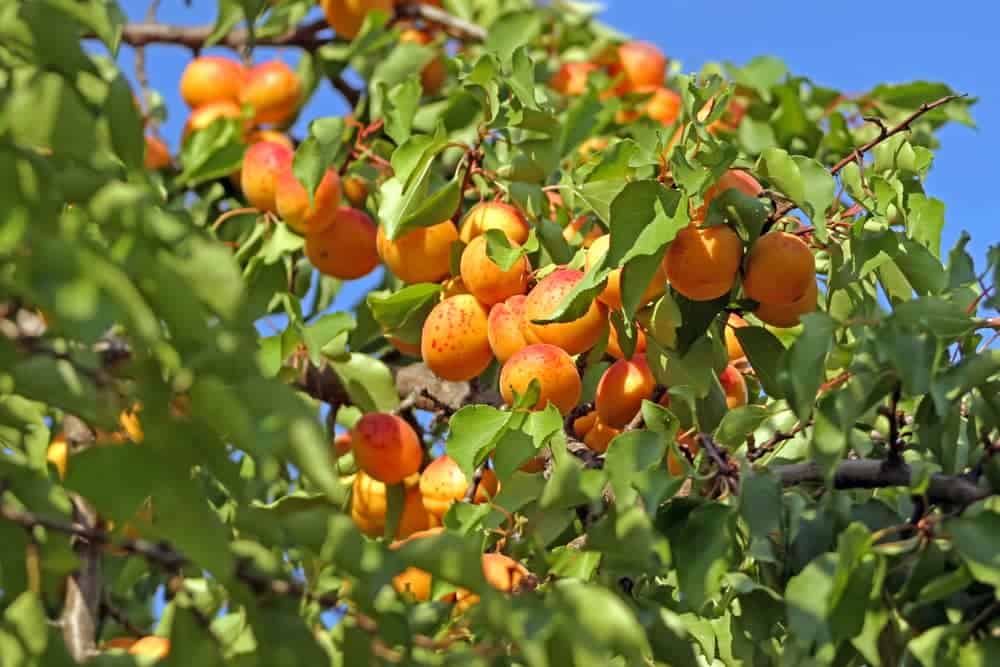If you left your apricot tree alone without pruning, it’d survive… but you’d miss out on perfectly ripe fruits.
It may feel like you’re saving time by skipping pruning, but that can lead to more problems down the road – things like slowed growth, smaller harvests, and fungal diseases.
Knowing how to prune an apricot tree ensures the tree remains healthy, maintains a good shape, and produces a delicious harvest. Pruning is a key part of caring for a fruit tree!
Want to enjoy the fruits of your labour year after year? Break out the loppers and we’ll break out the info from our expert Aussie gardeners.
Why Prune Apricot Trees? | Tools for Pruning | Pruning Young Trees | Pruning Established Trees | Pruning Patio Trees | Pruning Overgrown Trees | Pruning Tips
When To Prune Apricot Trees In Australia
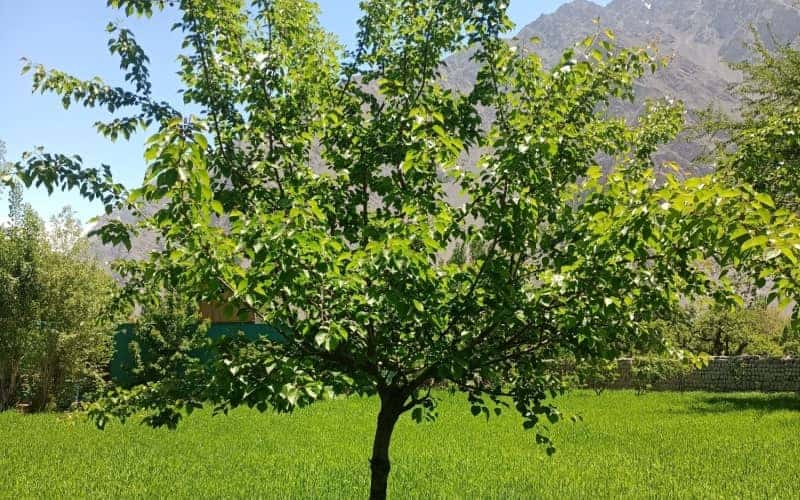
The best time to prune a mature apricot tree is in summer, after fruiting. This ensures the tree’s branches heal quickly and minimises the risk of disease.
You can also prune a mature tree in winter while it’s dormant, but this should be more for shape or structural damage. Winter pruning makes it easier to identify dead or damaged branches, since there are few leaves.
For a young apricot tree, the best time to prune is in late winter to early spring (August to September) – before the growing season or while the tree is dormant.
This is called “formative pruning,” which sets the tree up with a good structure as it matures. This will also encourage stronger growth and more fruit to harvest.
Regardless of the time of year, though, you should prune an apricot tree if you see any of these signs:
- Broken branches
- Crossed branches
- Dead or diseased wood
- Weak branches or shoots
- Crowded centre of the tree
Why Do You Need To Prune Apricot Trees?
Pruning fruit trees isn’t just about aesthetics. Regular pruning is part of apricot tree maintenance, and comes with several benefits – making it worth the effort.
Healthy growth: Removing dead or weak branches helps the tree allocate energy and nutrients to healthy parts, ensuring vigorous growth and improving fruit quality.
Increased production of fruits: Pruning stimulates new growth and encourages the development of fruit-bearing branches, leading to more apricots – yay!
Improved air circulation: Thinning out the canopy allows better airflow between branches, minimising the risk of fungal disease.
Better sunlight penetration: Pruning ensures that sunlight reaches all parts of the tree, promoting healthier branches and ripening apricots.
Tree shape maintenance: Regular pruning also maintains the tree’s desirable shape and size, making it easier to manage. It also prevents the tree from becoming top-heavy and possibly toppling in a storm.
Preventing overcrowding: Removing excess branches allows the rest of the tree to receive more sunlight and air circulation.
Reducing disease spread: Removing diseased timber minimises the risk of the disease or rot spreading to the rest of the tree.
If you’re feeling daunted by pruning – especially for large fruit trees like apricots – call in your local pruning experts!
Tools You Need for Pruning
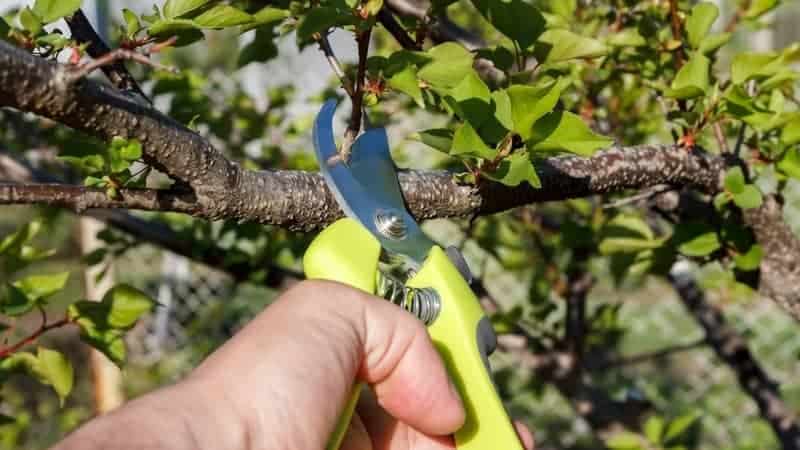
Whether you’re doing formative pruning or maintaining a mature tree, make sure you have the right equipment!
For pruning apricot trees in Australia, you’ll need:
- Pruning shears for thin branches (up to 2cm)
- Loppers for thicker branches (up to 5cm)
- Pruning saw for very large branches (up to 12cm)
- A sturdy ladder (to reach higher branches)
Sharpen any cutting tools to ensure you make clean pruning cuts. Botched or mangled cuts increase the risk of rot or damage.
You should also disinfect any tools before and during pruning, to make sure they don’t spread disease. Common garden tool disinfectants include methylated spirits or 3% hydrogen peroxide.
How To Prune An Apricot Tree in Australia
Factors that affect apricot tree pruning include the tree’s age and location.
Young trees will be pruned differently than mature ones, while dwarf apricot varieties have their own pruning requirements.
When growing an apricot tree, do not prune them when newly planted. The branches will heal slower, making them prone to fungal diseases or rot.
Pruning young apricot trees

When pruning a young apricot tree, your focus should be on developing its shape and structure. This can set your young tree off to a fruitful start.
Prune young apricot trees in late winter to early spring, when new leaves emerge. The tree is actively growing but not yet fruiting, so the cuts will be smaller and heal quicker.
Start near the ground, removing shoots or branches growing low on the trunk (about 45cm off the ground).
Afterwards, work your way up the tree. Identify and remove branches that are weak, broken, or growing outwards at odd angles.
Trim off branches that are growing more upwards than outwards, or that are developing a “narrow crotch.” This will encourage an open-form crown with good air circulation.
If there are competing branches that grow within 15cm of each other, prune the weaker one back to the main trunk.
The aim is to have a handful of strong, healthy branches that will be the foundation of your tree. In the first year, you should shorten these branches to 5-10cm above the first outward-facing bud.
Cutting too close to a bud can prevent fruiting or healthy growth.
In the tree’s second and third years, cut back the branches by 1/3 to 1/2 the length. Always make sure there’s at least one bud to encourage spreading growth.
Pruning established apricot trees
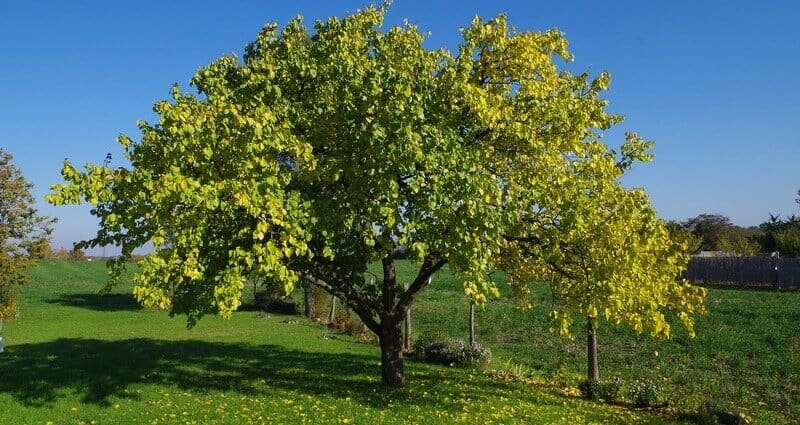
Established apricot trees – also called mature trees – are those that have reached their four-year mark.
Prune established apricot trees in summer, after the tree is done fruiting.
If you’ve put in the work with young trees, mature apricot trees should only need maintenance pruning. The aim is to keep the tree healthy and productive.
To start summer pruning for apricots, remove dead or diseased wood. Remove the weaker branch of any crossing branches.
Trim off weirdly-angled shoots growing from the trunk. Then shorten any long, thin branches to encourage stronger growth that can hold heavy fruit.
Remove branches or old shoots that are no longer fruiting and trim smaller branches that crowd the crown.
Finally, look for suckers or ground shoots around the tree’s base. Cut them as low to the ground as possible so they don’t resprout or reshoot, taking away energy from the main tree.
Pruning patio apricot trees
Patio apricots are usually dwarf varieties grown in pots for small gardens or patios. Given their size, pruning will be minimal but can be done all year round.
Prune your patio apricots after fruiting and focus on cutting dead, diseased, or damaged branches.
Cut excess shoots back to the main branches or trunk, encouraging horizontal growth.
Always look at the shape of your tree and remove branches that are too crowded to allow light and air to penetrate.
Finally, trim branches that no longer produce fruit.
How to Prune Overgrown Apricot Trees
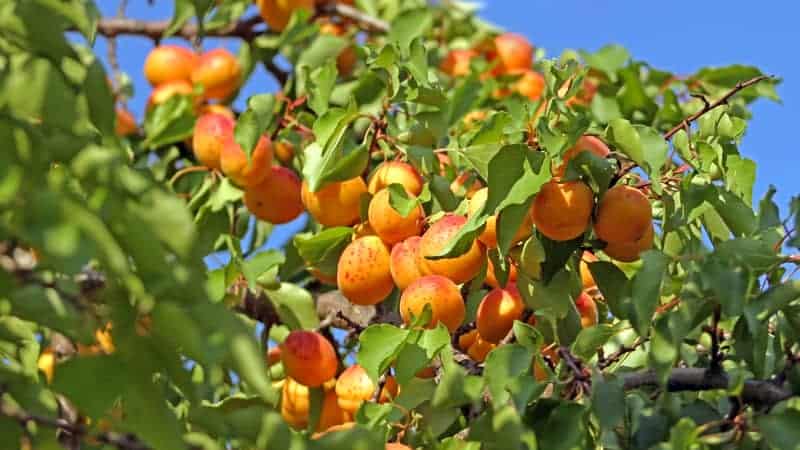
Overgrown apricot trees are old, large, and unproductive trees that haven’t been pruned in a long time.
They have scraggly or poor growth that’s harming the tree.
When pruning an overgrown apricot tree, don’t attempt to do large-scale pruning at once. Instead, thin the tree gradually over the next 2-3 years until it reaches your desired size.
Start the same way you would prune other fruit trees – removing dead, damaged, or diseased branches. For any crossed or tangled growth, cut the weaker of two branches.
Do not cut back more than 1/4 of the crown volume at a time.
Over time, move on to identifying and removing older branches, especially weak ones. Cut the oldest wood every year to open the crown and encourage new growth.
Follow by trimming other branches that haven’t produced fruit in a few years – cut them to a younger, lateral branch.
When you’ve gotten the tree to your desired size and shape, begin pruning the remaining branches to 1/3 their length to stimulate new shoots.
Once you’ve rejuvenated your apricot tree, continue maintenance pruning to keep it healthy.
Tips for Effective Apricot Tree Pruning
Use sharp pruning shears to make smooth cuts close to the branch collar (the swollen area at the branch’s base).
When pruning apricot trees, never remove more than 25% of the tree’s branches in one go. This will stress the tree, leading to erratic growth, poor fruiting, and disease.
Monitor the tree for signs of pests or diseases when pruning. This will help you address any issues ASAP.
Do not treat tree wounds with wound sealants. Instead of healing your apricot tree, it might do more harm to it.
Besides obstructing the tree’s natural healing power, pruning sealers can trap moisture in the tree, which can result in decay and fungal growth.
Get A+ Apricot Trees Every Year
Just like other fruit trees, pruning apricot trees is necessary to get healthy, delicious fruits.
Every cut you make influences the tree’s shape, health, and fruit production. It can also let your tree live longer or give you a bigger harvest.
Good pruning while your apricot tree is young helps ensure it will only need maintenance pruning when mature. That way, you can sit back and reap the rewards – or fruits – of your efforts.

